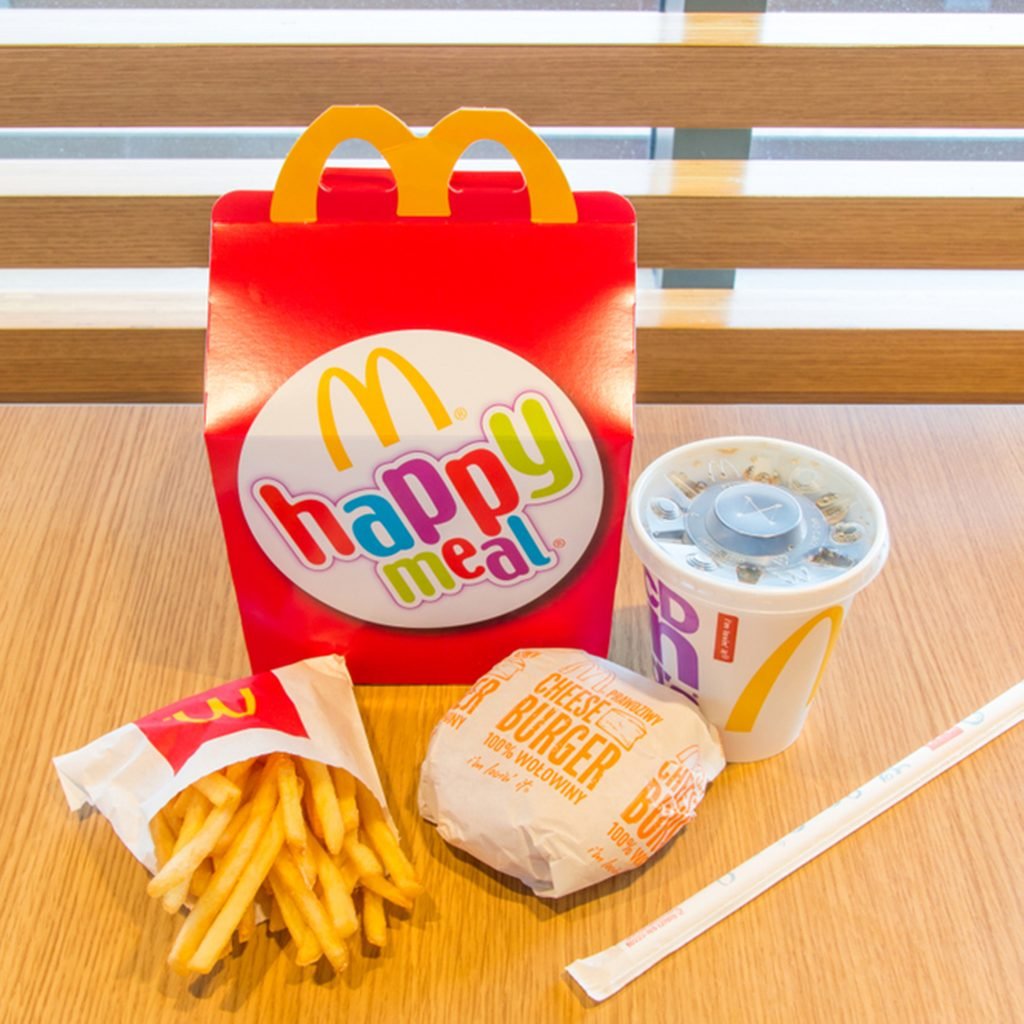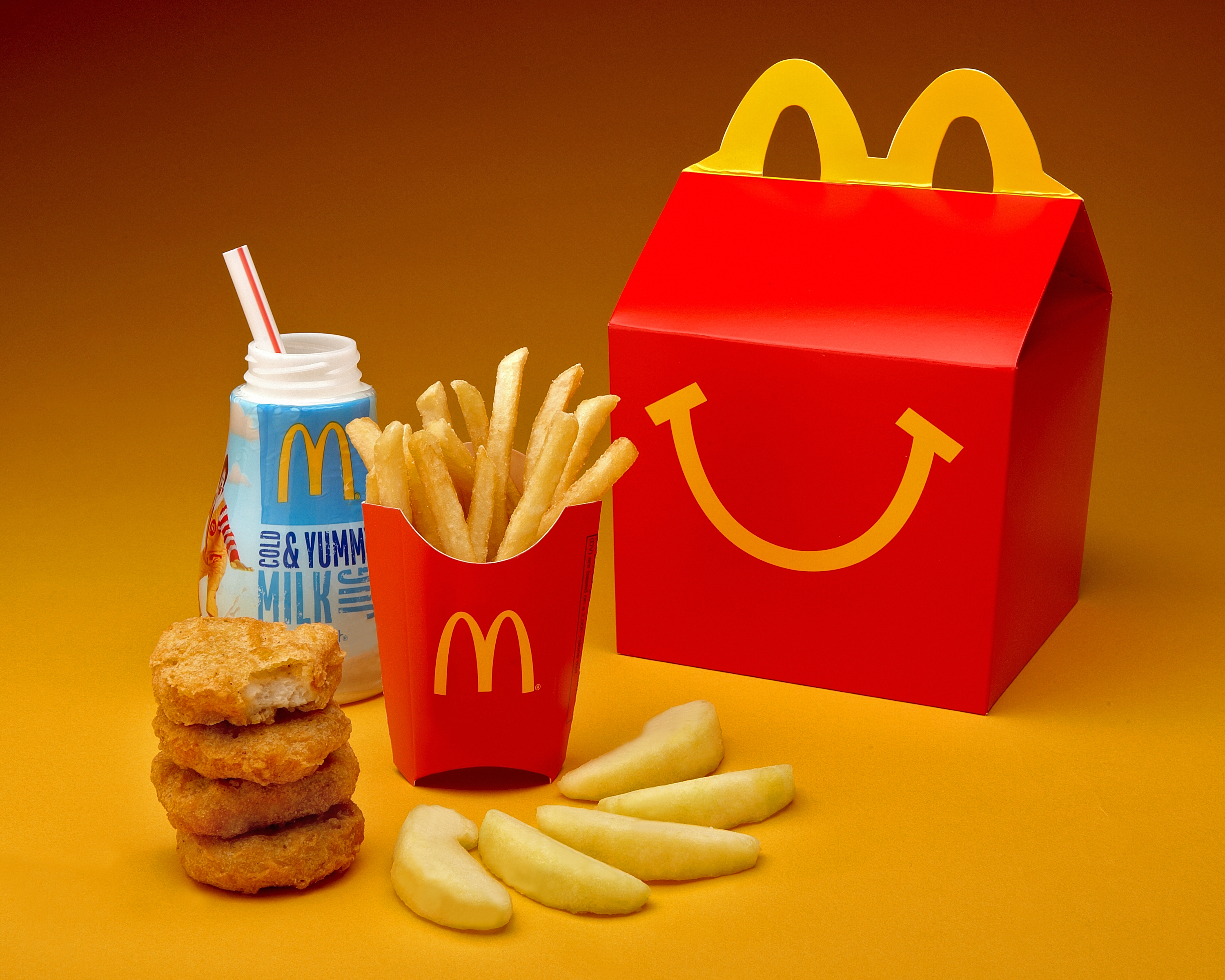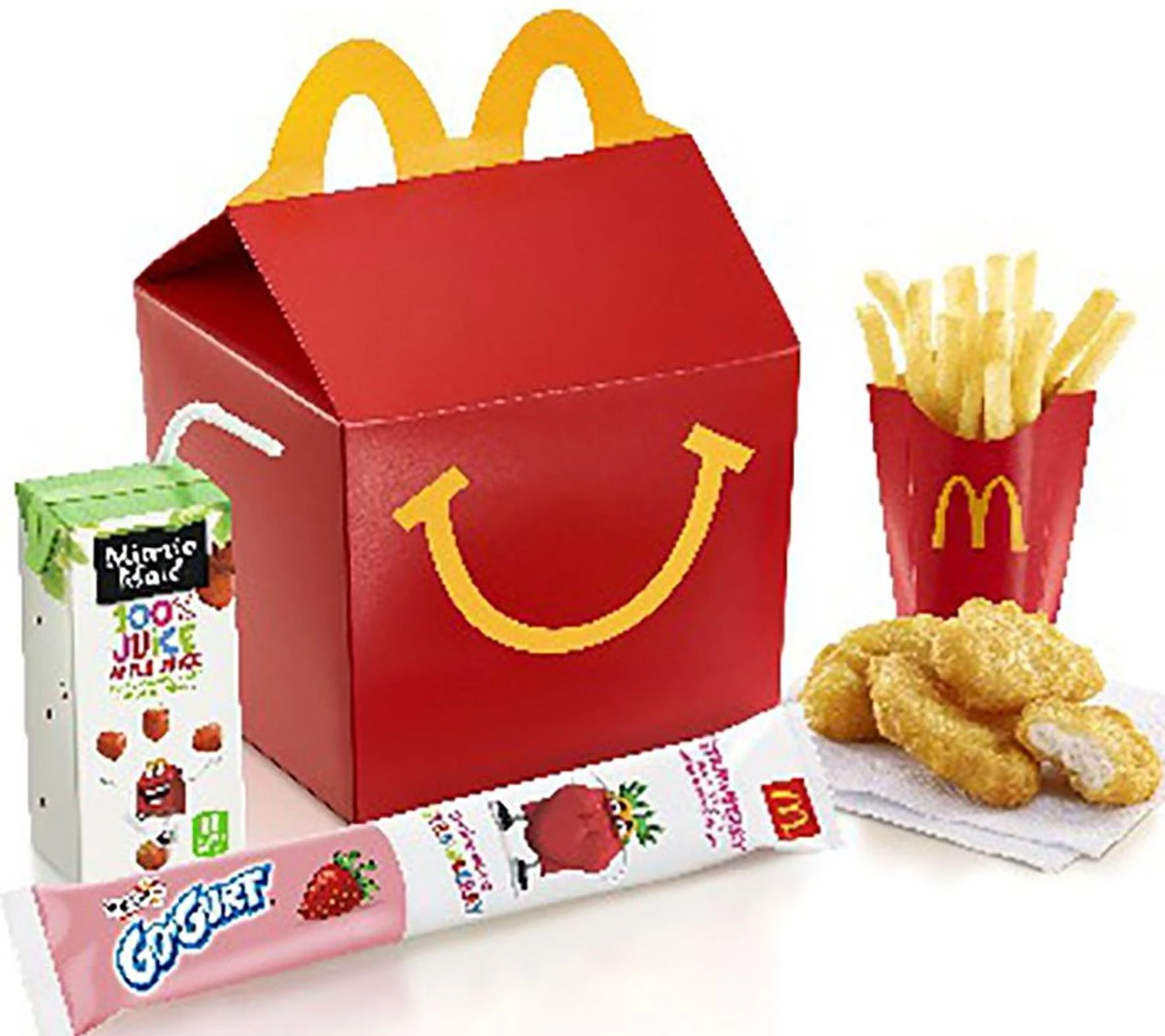Best Happy Meal Deals At McDonald's!
A childhood staple, this promotional children's meal offers more than just a quick bite. What drives its enduring popularity?
This meal combo, often featuring a sandwich, side, and drink, is a curated selection of food items designed for children. It typically includes a toy or small collectible as a bonus. The specific items in the meal vary by region and time, but the fundamental concept remains consistent: a balanced or limited-portion, kid-friendly meal package.
The meal's success lies in its appeal to both children and parents. It provides a structured and familiar dining experience for children, typically including choices catering to different tastes. From a parent's perspective, it often represents a convenient and economical solution for a quick meal out, packaged with an entertaining element that addresses the child's interest. The historical context shows its evolution from simple, value-driven deals to more elaborate packages that incorporate popular toys and characters. This focus on both value and entertainment helps ensure the meal remains a key part of children's mealtime culture.
This analysis will now explore further the meal's popularity, exploring the impact of menu variations, toy incentives, and evolving marketing strategies.
McDonald's Happy Meal
McDonald's Happy Meal, a ubiquitous children's menu, offers a complex interplay of factors influencing its enduring success. Understanding these facets is key to comprehending its significance in the fast-food industry.
- Child-focused meals
- Promotional value
- Toy incentives
- Marketing campaigns
- Nutritional considerations
- Cultural impact
McDonald's Happy Meal's success is rooted in its child-focused meals, designed with smaller portions and appealing options. Promotional value, often realized through the meal's affordability, also contributes to its popularity. The inclusion of toys, particularly linked to popular franchises, serves as a strong incentive for children. Well-targeted marketing campaigns generate awareness and drive demand. Nutritional considerations, while occasionally a subject of scrutiny, are nonetheless part of the meal's composition. Finally, its enduring presence in children's cultural experiences cannot be overlooked; it has become a common and often nostalgic element of childhood. For instance, the meal's evolution reflects shifting interests and cultural trends. The toy selection reflects broader popularity, creating lasting connections for children with the brand. This multifaceted approach contributes to its continued significance in the fast-food sector.
- Allie_dunn Onlyfans Leaked
- Wentworth Earl Miller Ii
- What Happened To Peter Attia
- Hanna Uwu Leak
- George And Amal Clooney Kids
1. Child-focused meals
Child-focused meals, a core component of the McDonald's Happy Meal, are meticulously designed to appeal to children. This involves considerations beyond just food. Portion sizes are often smaller and presented in ways that are visually appealing to children, employing colours and shapes commonly associated with child-friendly fare. The menu includes familiar, often kid-favourite, food items. This element, focused on appealing to the sensory experiences of children, is critical to the Happy Meal's success.
The practical significance of this design approach is demonstrably high. The appeal of the meal extends to the prospect of entertainment and collectivity. The toys that accompany the Happy Meal create a layer of excitement, reinforcing the meal's role in a child's social experience and shaping positive associations with McDonald's. This combination of food and entertainment fosters both a positive and memorable experience for children, promoting brand loyalty and creating positive associations that often extend to future interactions. A tailored experience, designed to engage children, directly translates into purchasing decisions. Examples of child-focused meal design principles are easily observed in the menu choices, portion control, and overall aesthetic of the Happy Meal, all contributing to the enduring popularity of the product line.
In conclusion, child-focused meals within the McDonald's Happy Meal are a crucial aspect of its success. By tailoring the meal presentation and content to children's preferences and perceptions, the product fosters positive associations and experiences, leading to increased consumer interest and brand loyalty. This illustrates the critical role of understanding child psychology and sensory engagement in food marketing strategies.
2. Promotional Value
Promotional value is intrinsically linked to the McDonald's Happy Meal's success. The meal's affordability, coupled with the enticing combination of food items and incentives, drives considerable appeal. This combination creates a compelling value proposition for both children and parents. The perceived value, extending beyond just the price, is a key driver of consumer choice. Practical examples include the meal's frequent inclusion in family outings and its role as a budget-friendly dining option for families. The meal's attractiveness is often further enhanced by the inclusion of promotional items, driving a perception of more than just a meal, but a complete experience at an attractive price point.
The strategic placement of promotional value within the Happy Meal framework directly affects consumer behaviour. The low cost of the meal, coupled with the entertainment value (toys, collectibles), makes it a highly attractive option. The balance between food cost, entertainment incentives, and overall experience ensures a competitive position within the market. This understanding is critical for analyzing and potentially replicating successful promotional strategies in various contexts, encompassing other food or merchandise sectors. This promotional aspect is not merely a marketing technique; its a fundamental element that drives consumer demand for the Happy Meal. The value proposition often extends beyond the price and includes a combination of elements that make the meal more appealing. The successful promotion of the Happy Meal emphasizes its role as a practical and attractive dining option, driving repeated purchases.
In summary, promotional value plays a critical role in the enduring success of the McDonald's Happy Meal. The perceived value of the meal, encompassing affordability, entertainment, and overall experience, directly influences consumer choice. Understanding this promotional aspect provides valuable insights into creating compelling value propositions in various business sectors. The consistent use of promotional techniques and strategies associated with the Happy Meal demonstrates the effectiveness of this approach, showcasing its value for repeat business and market penetration. Further analysis of specific promotional campaigns could identify and evaluate the most effective elements for achieving broader marketing objectives.
3. Toy Incentives
The inclusion of toys in the McDonald's Happy Meal represents a crucial component of its marketing strategy. This element leverages children's inherent fascination with collecting and playing to enhance the meal's appeal. The impact of toy incentives on the overall success of the Happy Meal is significant and warrants detailed examination.
- Creating a Powerful Incentive
The presence of a toy acts as a powerful incentive for children. The allure of obtaining a new toy significantly increases their desire for the Happy Meal, transforming a simple meal into a more engaging experience. This incentive transcends the purely practical; it taps into the psychological desire for novelty and collection. The excitement surrounding new releases of themed toys often drives substantial consumer demand, solidifying the Happy Meal as a desirable choice.
- Leveraging Brand Partnerships
Strategic partnerships with popular entertainment franchises are a key element of successful toy incentive programs. Collaborations often link the Happy Meal to widely recognized characters, brands, or franchises. This association extends the brand appeal to the child and potentially their families, creating powerful linkages between the Happy Meal, the child, and the desired brand. These partnerships significantly increase brand recognition and reinforce positive associations with the meal.
- Promoting Brand Loyalty
The toy incentive program helps foster brand loyalty. The allure of collecting toys reinforces positive associations with the Happy Meal, encouraging repeat purchases and long-term customer engagement. The acquisition of sought-after toys frequently leads to continued interest and involvement with the brand, leading to increased sales and brand recognition, particularly among children.
- Generating Buzz and Social Sharing
The excitement generated by new toy releases significantly amplifies brand awareness. Children eagerly share their discoveries and findings with friends, which creates word-of-mouth marketing. This social interaction further drives demand and reinforces the cultural relevance of the Happy Meal, as children engage and interact with each other and the brand.
In summary, the toy incentive strategy within the McDonald's Happy Meal is a critical aspect of the overall marketing approach. The ability of the toy component to create desire, leverage partnerships, build loyalty, and foster social sharing underlines the strategic value of this element in maintaining the Happy Meal's enduring popularity. These various aspects of toy incentives act as a powerful engine for driving continued interest and generating sustained sales.
4. Marketing Campaigns
Marketing campaigns surrounding the McDonald's Happy Meal are integral to its success. These campaigns are not merely promotional efforts; they are carefully crafted strategies designed to shape consumer perception, drive demand, and reinforce brand association. The effectiveness of these campaigns directly impacts sales figures and the overall market position of the Happy Meal. Successful campaigns effectively exploit cultural trends, targeting children's interests, and leveraging the excitement surrounding new product releases or toy partnerships.
Examination of past campaigns reveals a consistent pattern. These campaigns frequently integrate popular characters, franchises, or themes. This strategic alignment enhances the Happy Meal's appeal to a broader audience, translating into increased consumer interest and purchase frequency. For instance, collaborations with popular film franchises or toy lines generate considerable buzz, creating a demand-pull effect. A key characteristic is the campaign's visual and thematic coherence. The consistent visual language reinforces brand recognition and creates a compelling narrative, particularly important for establishing brand identity and emotional connections in the minds of children. The campaigns often adapt to current trends and cultural contexts, ensuring ongoing relevance to consumers and sustaining their engagement over time. Practical application of such strategies allows brands to efficiently connect with a specific target demographic while sustaining a broader appeal. Careful analysis of these marketing efforts reveals essential patterns, emphasizing the impact of successful campaign design, visual elements, and the effective promotion of desired values.
In conclusion, the marketing campaigns surrounding the McDonald's Happy Meal are pivotal to its sustained popularity. These campaigns, designed with specific target demographics in mind, shape consumer perception, drive demand, and reinforce brand recognition. Their effectiveness is demonstrably linked to success metrics, reflecting the importance of strategic, well-executed marketing strategies. The evolution and adaptation of these campaigns highlight the critical need for brands to adapt to shifting consumer preferences and cultural trends to maintain relevance and appeal. Analysis of these campaigns reveals valuable insights into the dynamics of modern marketing, particularly within the children's market segment.
5. Nutritional Considerations
The McDonald's Happy Meal, while a popular choice for children, necessitates careful consideration of its nutritional content. This is particularly relevant given the meal's frequent consumption and potential impact on dietary habits. Understanding the nutritional profile and potential implications is crucial for informed consumer choices and potential improvements to the product.
- High Fat and Sugar Content
Many Happy Meal components, such as certain sandwiches, fries, and drinks, often contain elevated levels of fat and sugar. This high caloric density can contribute to potential health risks, including weight gain and related conditions. The frequency of consumption, especially when not balanced with other nutritious foods, necessitates careful consideration. Examples include french fries, sugary drinks, and certain sauces.
- Limited Nutritional Value in Some Components
Certain elements within the Happy Meal may offer limited nutritional value. Portions of the meal may not provide adequate levels of essential vitamins, minerals, and fiber, particularly in comparison to balanced diets. This deficiency, if prevalent, can negatively impact overall health and development.
- Potential for Overconsumption
The appealing nature of Happy Meals, combined with the often-present toy incentives, can create a tendency toward overconsumption. This overconsumption, especially when frequent, contributes to potential health issues, highlighting the need for responsible portion control and a balanced dietary approach.
- Varying Nutritional Profiles Across Options
The composition of the Happy Meal can vary based on specific choices. The selection of options influences the nutritional profile. For example, choosing healthier drink alternatives and selecting leaner protein sources influences the overall nutritional impact. This variability underscores the importance of making informed choices when considering the meal.
Ultimately, the nutritional considerations of the McDonald's Happy Meal necessitate a balanced perspective. While it can serve as a convenient meal option, conscious choices regarding portion size, healthier component selection, and balanced consumption patterns are essential for maximizing its positive impact. The meal's appeal, while valid, necessitates a mindful approach from consumers and potential future adjustments to the meal's composition. Awareness of the nutritional elements can foster more informed choices and enhance the potential benefits of the Happy Meal for children, promoting both enjoyment and healthy habits.
6. Cultural Impact
The McDonald's Happy Meal's enduring presence transcends its role as a quick meal. Its cultural impact is profound, deeply entwined with societal values, trends, and evolving perceptions. The meal's success stems, in part, from its ability to reflect and shape cultural narratives. This connection is not merely coincidental; it's fundamental to the meal's continued relevance. The Happy Meal's cultural significance is demonstrably tied to its evolving relationship with broader social and economic forces. Examples include its association with specific eras, its alignment with popular culture, and its portrayal in various forms of media.
The Happy Meal's presence in popular culture is evident in its embodiment of particular eras. For instance, the prominence of specific toys during different periods reflects the popular entertainment of those times. The Happy Meal is a historical document, reflecting trends in entertainment and media. Its enduring presence in children's culture further suggests a deep-seated cultural resonance. Moreover, the Happy Meal's recurring visibility in media portrayals, from films to television shows, confirms its established cultural role. The meals integration into societal narratives underscores its significant role as more than just a food product; it embodies cultural signifiers. This is illustrated by its varied representations in popular culture, from affectionate portrayals to satiric commentary. This complex interplay underscores the Happy Meals profound cultural impact.
Recognizing the cultural impact of the McDonald's Happy Meal is crucial for businesses and researchers alike. Understanding the connection between products and cultural moments provides insights into consumer behaviour and societal values. By analyzing how the Happy Meal has reflected and shaped cultural narratives, businesses can adapt their strategies. Academics and researchers, too, can glean insights into broader cultural trends by examining the meals evolution. Thus, the analysis of the Happy Meal's cultural impact provides a valuable lens through which to understand contemporary culture and consumer behaviour, with implications for diverse industries.
Frequently Asked Questions
This section addresses common inquiries regarding the McDonald's Happy Meal, offering clear and concise answers. Information presented aims for accuracy and clarity.
Question 1: What constitutes a standard McDonald's Happy Meal?
A standard Happy Meal typically comprises a kid-sized portion of a sandwich, side item (often French fries or nuggets), and drink. A toy or collectible is frequently included as an additional element. Specific items may vary by location and time, but this general structure remains consistent.
Question 2: Are the Happy Meal toys always themed?
Toy themes often align with popular entertainment franchises, such as movies, video games, or television shows. However, McDonald's also introduces toys based on seasonal themes or standalone characters. This alignment with current entertainment trends is a key strategy.
Question 3: How frequently do the Happy Meal toys change?
The frequency of toy changes varies. McDonald's typically introduces new toys on a schedule based on promotional cycles, often linked to major film releases or established seasonal themes. Information on specific releases is usually accessible through online resources or store announcements.
Question 4: What are the typical nutritional concerns regarding Happy Meals?
Happy Meals frequently contain relatively high levels of fat and sugar, particularly from some common side items and drinks. Nutritional information is readily available, aiding consumers in making informed choices regarding portion size and overall dietary intake. Careful consideration is warranted given this characteristic.
Question 5: What is the role of the Happy Meal in children's mealtime culture?
The Happy Meal has become a recognized and frequently utilized element within children's mealtime culture. Its role combines practicality for parents, entertainment for children, and marketing for the brand. This complex interaction highlights the meal's broader cultural significance.
Key takeaways: This analysis underscores the multifaceted nature of the Happy Meal. Its success involves a complex interplay of promotional tactics, nutritional considerations, and cultural significance. Consumers can benefit from a thoughtful approach, encompassing nutritional awareness and the understanding of the meal's broader implications. Further study of market trends and consumer behavior could prove beneficial for informed decision-making.
Moving forward, further investigations into the effects of Happy Meals on long-term eating habits and the impact of toy incentives on children's choices will offer broader insight.
Conclusion
The McDonald's Happy Meal's enduring popularity rests on a complex interplay of factors. Analysis reveals a strong emphasis on child-focused design, including appealing visuals, portion sizes, and menu options. Promotional value, frequently achieved through affordability and incentive items like toys, plays a crucial role in attracting consumers. Strategic partnerships with popular entertainment franchises amplify the meal's appeal. However, nutritional considerations surrounding high fat and sugar content, and the potential for overconsumption, remain a critical concern. The cultural impact, shaping children's mealtime experiences and reflecting broader entertainment trends, is also undeniable. Marketing campaigns, meticulously tailored to target children, further cement the Happy Meal's position within popular culture. Ultimately, the Happy Meal's success derives from a carefully calculated blend of consumer appeal, market strategy, and brand awareness. This comprehensive evaluation highlights the meal's enduring presence within the fast-food industry and its significant role in shaping childhood consumption patterns.
Further research could explore the long-term effects of frequent Happy Meal consumption on dietary habits and the evolving strategies employed by McDonald's in response to evolving consumer preferences and health concerns. Understanding these factors is crucial for a comprehensive understanding of the Happy Meal's role in the food industry and its impact on modern consumer behavior.
- Plumpy_mage Leak
- World Hierarchy Pyramid 4k
- Nisha Guragain Mss Video
- Valkyrae Nipslip
- Tamilblasters Mov

9 Ways the Happy Meal Has Changed Over the Years

Introducing McDonalds New And Improved Happy Meal And A Party! ROCK

Happy Meal McDonald's Wiki Fandom